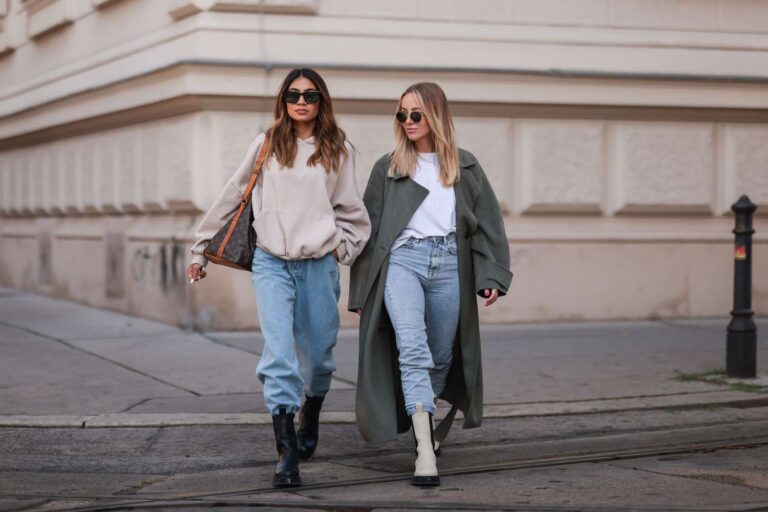Modern fashion is more than just clothing; it’s a dynamic and constantly evolving form of self-expression and cultural commentary. In recent years, fashion has moved beyond trends to embrace inclusivity, sustainability, and technology, reflecting the complexities of a fast-paced, interconnected world. Today’s fashion scene is a fascinating blend of aesthetics, ethical considerations, and technological innovations that define how we look, what we value, and how we communicate our identities.
1. The Rise of Individuality and Self-Expression
One of the most significant shifts in modern fashion is the emphasis on individuality. Unlike the rigid trends that defined previous eras, contemporary fashion celebrates the freedom to express personal style without constraints. Social media platforms like Instagram, TikTok, and Pinterest allow individuals to showcase unique styles and curate their own identities, fostering a global exchange of ideas and inspirations. This openness has led to more diverse fashion expressions, where clothing becomes a powerful form of storytelling and individuality.
Fashion brands have responded to this by offering customizable products and inclusive sizing, allowing individuals to make choices that best represent their personalities. Designers are increasingly tapping into subcultures, gender-fluid styles, and nontraditional aesthetics, challenging norms and catering to a diverse range of customers.
2. Sustainable and Ethical Fashion: A New Norm
With a growing awareness of environmental issues, sustainability has become central to modern fashion. Fast fashion, once praised for making runway looks accessible, now faces criticism for its environmental impact. Many brands are responding by embracing eco-friendly materials, ethical manufacturing practices, and transparency in their supply chains. Labels such as Patagonia, Stella McCartney, and Everlane have become pioneers in sustainable fashion, setting an example for others to follow.
Recycling, upcycling, and “slow fashion” are now popular alternatives to the traditional linear fashion model. Customers are increasingly drawn to brands that prioritize eco-conscious practices, leading to an industry-wide push for sustainable sourcing, ethical labor, and less wasteful production processes. This shift marks a profound change as consumers demand more responsibility from their favorite brands.
3. Technology Meets Fashion: The Digital Transformation
The intersection of technology and fashion is redefining the industry. Digital fashion shows, virtual try-ons, and augmented reality (AR) are changing how consumers interact with fashion, especially in a post-pandemic world. Virtual try-ons allow customers to test how clothing will look without leaving their homes, while 3D design tools enable brands to produce items digitally, reducing waste and speeding up production times.
Digital fashion is also creating new spaces for self-expression through virtual avatars, especially on platforms like Decentraland and The Sims, where users can purchase digital fashion items. NFTs (non-fungible tokens) are also emerging in fashion, allowing designers to create and sell unique digital items. This digital evolution expands the reach of fashion beyond the physical world, enabling designers to explore limitless creativity without environmental costs.
4. The Revival of Vintage and Thrift Fashion
Vintage and thrift shopping have gained immense popularity, fueled by Gen Z’s focus on sustainability and a desire for unique fashion. The return to thrift is not just about affordability but also about rejecting the disposable nature of fast fashion. This movement brings back styles from past decades and blends them with modern aesthetics, allowing fashion enthusiasts to mix and match vintage pieces to create something new and fresh.
Apps and platforms like Depop, Poshmark, and ThredUp make it easier for people to buy and sell second-hand clothing, creating a sustainable loop and expanding access to preloved items. Vintage stores and online marketplaces offer a treasure trove of clothing from various eras, enabling people to revive classic looks while reducing their carbon footprint.
5. Inclusivity and Diversity in Fashion
Today’s fashion landscape is more inclusive and diverse than ever. Brands are breaking away from traditional beauty standards, incorporating models of different races, body types, and gender identities in their campaigns. Rihanna’s Savage X Fenty and Kim Kardashian’s SKIMS, for example, have been celebrated for their inclusive size ranges and diverse representation in advertising.
Fashion’s commitment to inclusivity is also seen in adaptive clothing lines, designed specifically for individuals with disabilities. This shift has brought a new level of accessibility to the industry, allowing fashion to be genuinely universal and reflective of a broader spectrum of identities.
6. The Influence of Streetwear and Athleisure
Streetwear and athleisure have become defining elements of modern fashion, merging comfort with style and reshaping what is considered high fashion. Originally emerging from skate and hip-hop culture, streetwear now influences major luxury brands like Louis Vuitton and Balenciaga. Athleisure, combining athletic wear with leisure aesthetics, has become a staple, especially after the global shift toward remote work.
These styles reflect a desire for versatility and practicality, fitting seamlessly into the lives of busy, active people. Streetwear’s popularity also speaks to the growing intersection of fashion and subcultures, making it a unifying force across different demographics.
Conclusion
Modern fashion is a rich tapestry woven from themes of sustainability, individuality, technology, and inclusivity. It reflects changing consumer values and global challenges while pushing the boundaries of creativity and ethics. As fashion continues to evolve, it remains a powerful tool for self-expression and a mirror of society’s values and concerns. The future promises further transformation as we embrace new technologies, new materials, and new ways to make fashion more personal, sustainable, and accessible to everyone.

